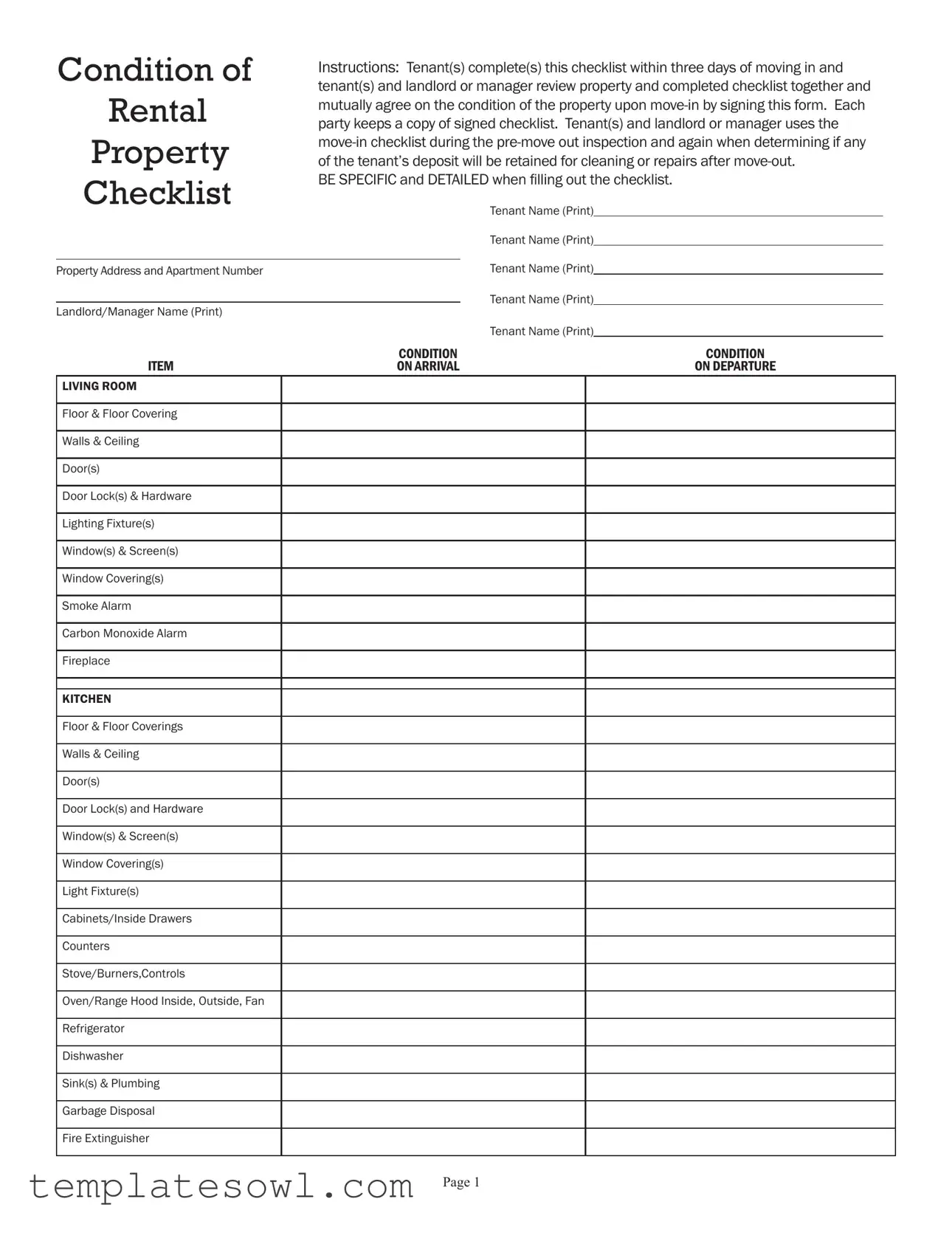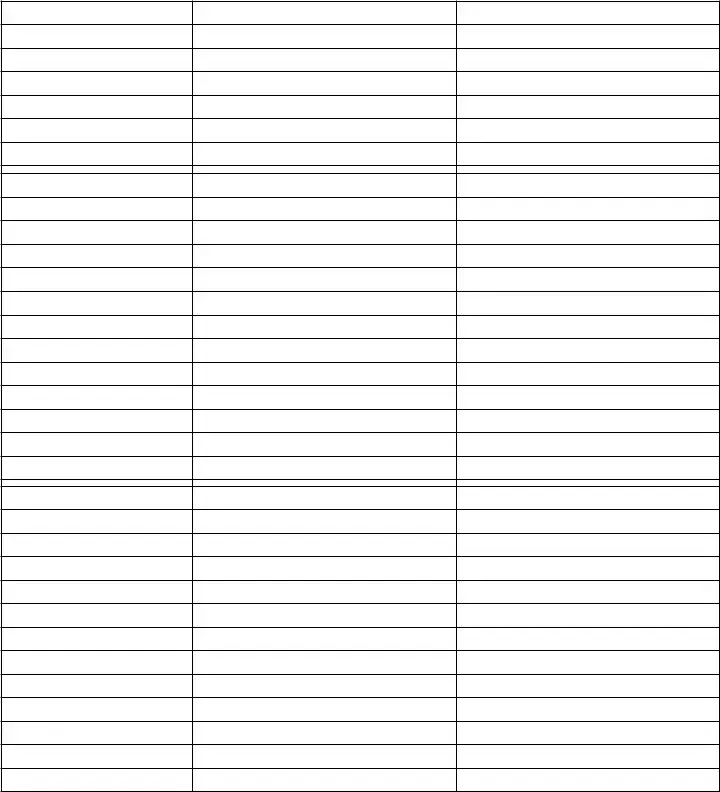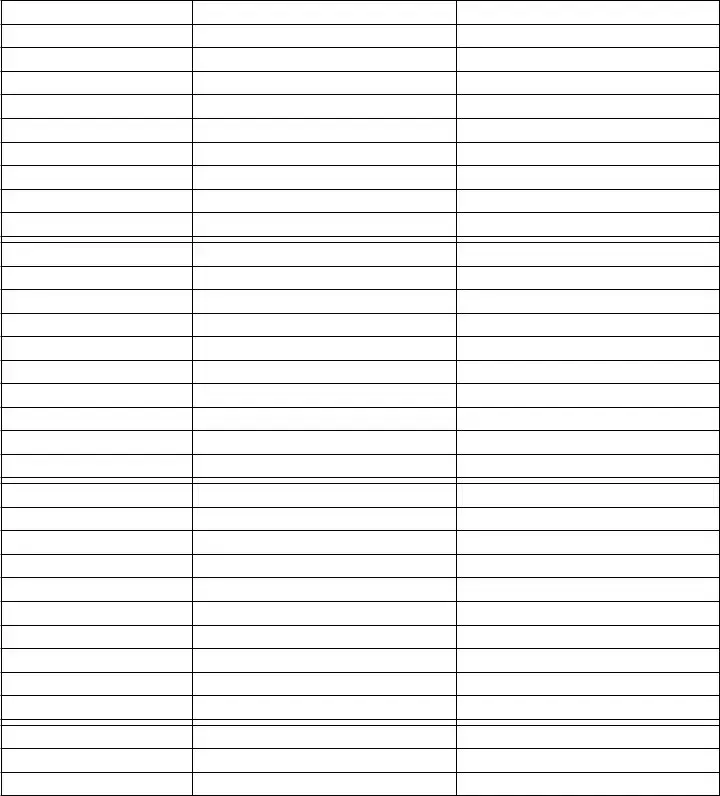What is the purpose of the Property Checklist form?
The Property Checklist form serves to document the condition of the rental property at the time of the tenant's move-in. It helps both tenants and landlords or property managers agree on the state of the premises, ensuring clarity regarding any existing issues. This checklist is essential for determining any responsibilities for cleaning or repairs when the tenant moves out.
When should tenants complete the checklist?
Tenants must complete the checklist within three days of moving in. This timeframe is important to ensure that any existing problems are documented promptly. Both the tenant and the landlord or manager should review the completed checklist together, fostering clear communication about the property's condition.
Who retains a copy of the signed checklist?
Once both parties have reviewed and signed the checklist, each party should retain a copy. This helps maintain a record of the property’s condition and serves as a reference point to resolve potential disputes in the future.
What items are included in the Property Checklist?
The checklist covers a variety of items in the rental property, including individual rooms like the living room, kitchen, bathrooms, and bedrooms. It details aspects like floors, walls, windows, light fixtures, appliances, and safety equipment such as smoke detectors and carbon monoxide alarms. Specific attention is required on each item's condition at move-in and will also be assessed at move-out.
How should tenants assess the condition of items?
Tenants should be both specific and detailed when filling out the checklist. This means noting any imperfections, damages, or maintenance issues. Clear descriptions assist in identifying any changes in condition when the tenant eventually moves out, which is crucial for the return of the security deposit.
What should tenants do if they find issues with the property?
If tenants discover any issues or damages during their inspection, they should document these findings on the checklist. It is advisable to bring these concerns to the landlord or manager's attention immediately. In doing so, both parties can discuss the issues and possible resolutions early on, preventing disputes later.
What are tenants responsible for after completing the checklist?
After completing the checklist, tenants are responsible for properly maintaining the rental property. This includes reporting any issues such as malfunctioning appliances or fixtures, and ensuring that safety devices like smoke and carbon monoxide detectors remain functional. Regular testing is expected and should be reported in writing if any problems arise.
Is there a specific process for testing safety devices?
Yes, tenants acknowledge that all smoke alarms, carbon monoxide alarms, and fire extinguishers are to be tested in their presence upon moving in. Tenants should agree to perform tests on these devices at least once monthly during their occupancy. Any failures or concerns regarding these safety devices need to be reported to the landlord or property manager as soon as possible.
What happens to the security deposit?
Each tenant's security deposit will be held to cover any cleaning or repair costs that may be necessary after their departure. The condition of the property as documented on the checklist will be a significant factor in determining what, if any, deductions may be made from the deposit when the tenant moves out.
What should tenants include in the comments section of the checklist?
In the comments section, tenants can provide additional notes regarding the condition of the property or any specific concerns that may not be captured by the checklist. This section can also be used to highlight areas that may require attention and to document conversations with the landlord or manager about the property.



